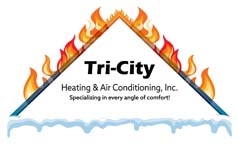In the realm of home comfort, few systems are as vital as HVAC (Heating, Ventilation, and Air Conditioning) units. They are the silent heroes that maintain optimal temperatures, regulate air quality, and ensure a cozy ambiance throughout the year. However, to maximize their efficiency and longevity, proper maintenance is crucial. We will guide you through the essential steps to keep your HVAC system running smoothly, addressing concerns from heating installation services to emergency furnace repair. But, let us understand your HVAC system.
Typically, these systems consist of a furnace or heat pump for heating, an air conditioner for cooling, ductwork for air distribution, and a thermostat for temperature control. Understanding how each component works will enable you to identify potential issues and address them promptly.
Components of an HVAC System
-
Heating Unit
The heating unit is responsible for generating warmth during colder months. It typically consists of a furnace, which burns fuel such as gas or oil, or a heat pump, which extracts heat from the air or ground. The heated air is then distributed throughout the home via ductwork.
-
Cooling Unit
The cooling unit, commonly known as an air conditioner, removes heat from indoor air during warmer months. It utilizes a refrigeration cycle to transfer heat from inside to outside, leaving the interior cool and comfortable. Like the heating unit, the cooled air is distributed through ducts.
-
Ventilation System
Ventilation is crucial for maintaining indoor air quality by exchanging stale air with fresh outdoor air. A ventilation system may include exhaust fans in bathrooms and kitchens, as well as air exchangers or air purifiers to filter and circulate air throughout the home.
-
Ductwork
Ductwork serves as the circulatory system of an HVAC system, distributing heated or cooled air to various rooms. Properly designed and sealed ducts ensure efficient airflow and temperature distribution, maximizing comfort and energy efficiency.
-
Thermostat
The thermostat acts as the control center for the HVAC system, allowing homeowners to set desired temperatures and schedule heating or cooling cycles. Advanced thermostats may include programmable features for enhanced energy efficiency.
How Your HVAC System Works
-
Heating Cycle
During the heating cycle, the furnace or heat pump ignites fuel or extracts heat from the environment, generating warm air. The blower fan then circulates this heated air through the ductwork, distributing it evenly throughout the home. The thermostat monitors indoor temperatures and signals the system to cycle on or off as needed.
-
Cooling Cycle
In the cooling cycle, the air conditioner extracts heat from indoor air, cooling it through a refrigeration process. The cooled air is then distributed through the ducts to lower indoor temperatures. The thermostat regulates the cooling cycle, maintaining the desired temperature set by the homeowner.
-
Ventilation Process
Ventilation systems ensure proper air circulation and exchange, reducing indoor pollutants and maintaining air quality. Exhaust fans remove stale air from bathrooms and kitchens, while air exchangers or purifiers filter and circulate fresh outdoor air throughout the home.
Now that we already know the basics of your HVAC system, here are the tips for Maintaining Your HVAC System because understanding your HVAC system is essential for maintaining indoor comfort, energy efficiency, and air quality. By familiarizing yourself with its components, functions, and maintenance requirements, you can ensure optimal performance year-round. Whether it’s the heating unit keeping you warm in winter or the cooling unit providing relief in summer, your HVAC system is a cornerstone of home comfort that deserves attention and care.
Year-Round HVAC Maintenance Guide
-
Regular Inspections
Regular inspections are the cornerstone of HVAC maintenance. Schedule professional inspections at least twice a year—preferably before the summer and winter seasons. Certified technicians can identify potential issues and perform necessary adjustments to ensure optimal performance.
-
Clean or Replace Air Filters
Air filters play a crucial role in maintaining air quality and system efficiency. Dirty filters restrict airflow, forcing the system to work harder and consuming more energy. Clean or replace filters every 1-3 months, depending on usage, to prevent dust and debris buildup.
-
Check Thermostat Settings
Optimizing thermostat settings can significantly impact energy consumption and comfort levels. Consider investing in a programmable thermostat that adjusts temperatures based on your schedule, reducing unnecessary heating or cooling when the house is unoccupied.
-
Ductwork Inspection
Leaky or poorly insulated ductwork can lead to energy wastage and compromised indoor air quality. Inspect ducts for signs of wear and tear, such as cracks or loose connections, and seal them promptly. Additionally, ensure proper insulation to prevent heat loss during the winter months.
-
HVAC Unit Cleaning
Keep the exterior of your HVAC unit free from debris, such as leaves, twigs, and dirt. Regularly clean the condenser coils and fan blades to maintain optimal airflow and heat exchange. For safety reasons, always turn off the power before performing any cleaning or maintenance tasks.
-
Professional Heating System Installation
When installing a new heating system, such as a furnace or heat pump, it’s essential to enlist the services of reputable heating installation services. Professional installers have the expertise and experience to ensure proper sizing, placement, and configuration, maximizing efficiency and longevity.
-
Annual Heating System Maintenance
Prioritize annual maintenance for your heating system, preferably before the onset of winter. Professional technicians can inspect and tune-up your furnace or heat pump, addressing any potential issues before they escalate into costly repairs or breakdowns.
-
Emergency Furnace Repair Preparedness
Despite meticulous maintenance, unforeseen issues can arise, especially during extreme weather conditions. Familiarize yourself with local emergency furnace repair services and keep their contact information readily available. Prompt action during emergencies can prevent further damage and ensure uninterrupted comfort.
-
Monitor Energy Consumption
Keep track of your HVAC system’s energy consumption to identify any sudden spikes or inefficiencies. High energy bills could indicate underlying issues, such as malfunctioning components or inadequate insulation. Addressing these issues promptly can lead to substantial savings in the long run.
-
Invest in Preventive Maintenance Plans
Consider enrolling in preventive maintenance plans offered by reputable HVAC companies. These plans typically include regular inspections, tune-ups, and priority service in case of emergencies. While there may be an upfront cost, the peace of mind and potential savings outweigh the expense.
Final Thoughts
Maintaining your HVAC system is not just about ensuring comfort but also protecting your investment and maximizing energy efficiency. From regular inspections to professional heating system installation and emergency furnace repair preparedness, proactive maintenance measures can extend the lifespan of your HVAC system and enhance indoor comfort throughout the year. By following this comprehensive guide, you’ll be well-equipped to navigate the challenges of HVAC maintenance and enjoy a cozy, comfortable home environment regardless of the season.













